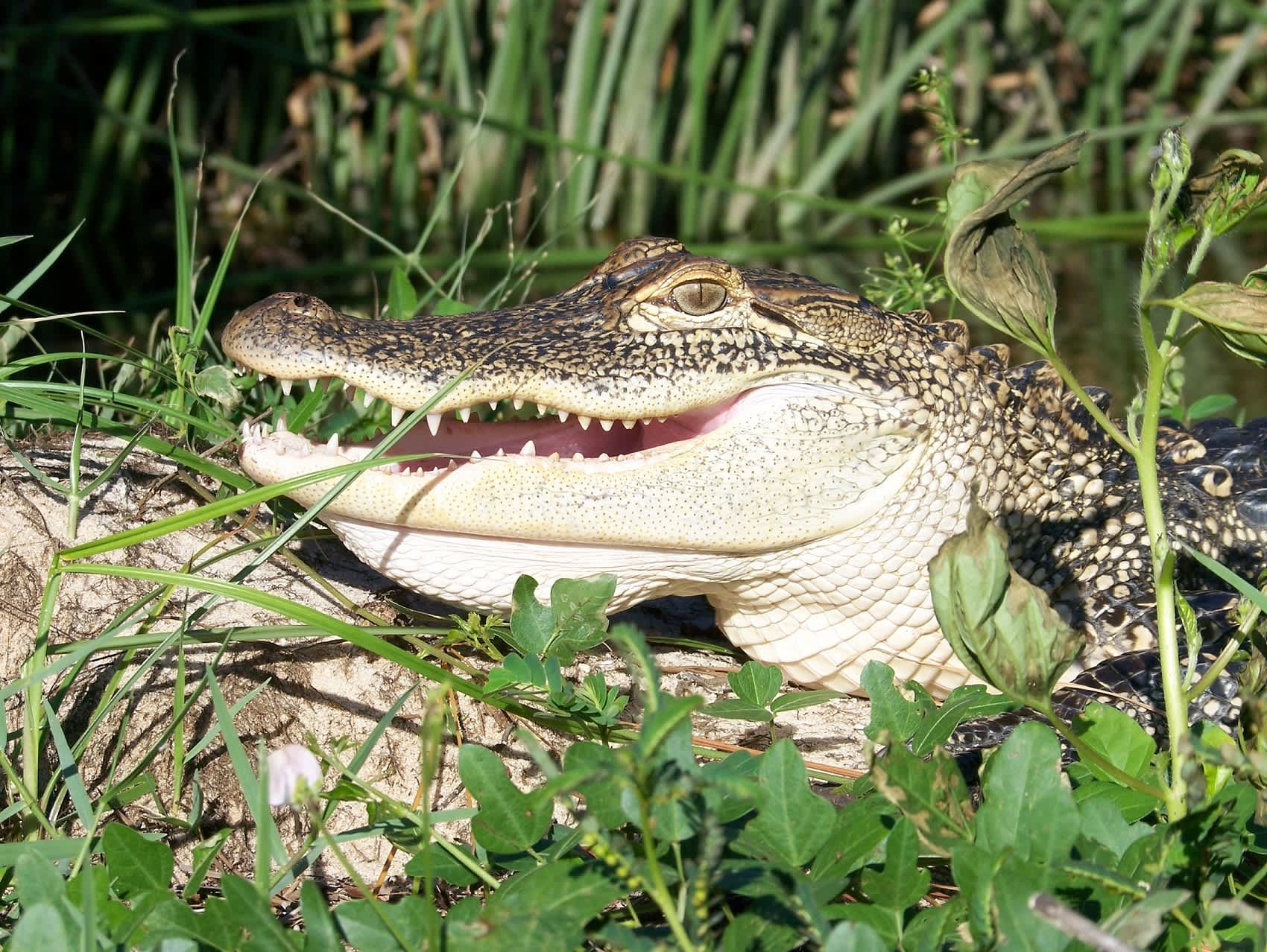Alligator Populations in Alabama
Alabama DCNR 12.14.12

The American alligator (Alligator mississippiensis) can be found in ponds, lakes, canals, rivers, swamps, and bayous, but it mostly lives in coastal marshes. Alligators prefer water that is 80 to 92 F, but adults have been found in areas where temperatures reach well below that range. They can live 70 to 100 years. Alligators are commonly mistaken with the American crocodile and caiman but they can be distinguished by their black and yellow-white coloration and more rounded snout.
The American alligator requires fresh water with an abundant food supply and marsh habitat nearby for nesting. Alligators are carnivores and feed on whatever food is available. Juveniles feed on small fish and crustaceans. Sub-adults will feed on fish, crustaceans, small mammals and birds. Adult alligators feed on fish, mammals, birds and other alligators. Cannibalism is common among alligators in areas where they are more populated.
Alligators in Alabama begin courtship in April and breed in late May and early June. Females usually lay 30 to 50 eggs at a time from early June to mid-July. They will cover the eggs with whatever vegetation is available in the habitat in which they live to form a mound. These mounds are usually about 2 feet in height and 5 feet in diameter.
The most common problem in Alabama pertaining to alligators is the mindset of humans who think they need to feed them. Alligators have survived for many years without help from humans. If fed by people, alligators quickly associate humans with food, which can be dangerous. Nuisance alligators have to be removed each year because of this problem.
The American alligator population in Alabama has changed dramatically over the years. They were once near extinction from the 1920s to the 1940s due to over harvesting. Alabama took the lead in 1938 by passing laws to protect them. In 1967, the American alligator was placed on the Endangered Species List by the U.S. Fish and Wildlife Service. After 20 years of protection, their population bounced back. Even though they were removed from the Endangered Species List in 1987, the American alligator remains federally protected due to similarity in appearance to other species. Because of this stiff protection, the population of alligators in Alabama’s waterways has become so plentiful that they are frequently a nuisance. Alabama has initiated a regulated hunting season to assist with the management and population control of alligators. The alligator populations in Alabama remain healthy.
For more information on Alabama’s alligators, contact Justin Monk, Alabama Division of Wildlife and Freshwater Fisheries, 30571 Five Rivers Boulevard, Spanish Fort, AL 36527; phone 251-626-5474.
The Alabama Department of Conservation and Natural Resources promotes wise stewardship, management and enjoyment of Alabama’s natural resources through five divisions: Marine Police, Marine Resources, State Lands, State Parks, and Wildlife and Freshwater Fisheries. To learn more about ADCNR visit www.outdooralabama.com.

